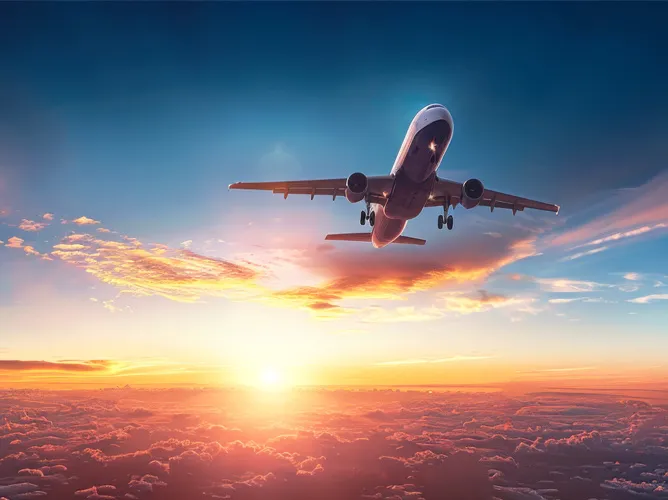By: Sheridan Stavac, Katheryn Stanwick and Meena Raman
Published: April 18, 2024 | Updated: October 10, 2024
Read time: 9 minutes
Introduction
It’s hard to imagine the travel industry without online travel agencies (OTAs). Over the years, the growth of OTAs has dramatically changed the way that people plan and book travel. Today’s travelers can use OTAs to streamline every aspect of their travel experience, from finding flights and accommodations to car rentals and sightseeing experiences. Other key players in the travel industry, particularly hotels, can strategically incorporate OTAs into their marketing and distribution strategies to better reach potential guests and increase bookings.
- In this piece, we’ll discuss:
What is an OTA booking?
An online travel agency (OTA) is a digital platform that enables travelers to search for, compare and book accommodations, flights and rentals. OTAs typically facilitate bookings for leisure travelers, while many business travelers use specific corporate booking engines called travel management companies (TMCs) to make their bookings.
In hotel terms, an OTA is a booking channel that enables the hotel to market available rooms. Booking.com, Expedia Group, Trip.com, Hotels.com and Priceline.com are examples of popular OTAs used to book hotels and flights.
In rental property terms, OTAs enable property owners to market their available properties, from single bedrooms to entire homes. Airbnb and VRBO are among the largest OTAs that facilitate the renting of temporary housing.
When travelers find and book their accommodations through these companies’ booking engines, they are making an OTA booking.
How do OTAs make money?
OTAs make money by charging commissions to hotels and rental property owners who use their platforms. There are three primary ways OTAs generate revenue:
1. Rooms
OTAs earn commission on hotel rooms that are booked through their platform, typically ranging from 5% to 30%. When it comes to managing the payment of services, OTAs can adopt either one of two models: the agency model or the merchant of record model.
Agency model
In the agency model, the OTA manages the reservation for the traveler but doesn’t take payment for it. Instead, it collects the payment details from the traveler and shares them with the hotel.
Merchant of record model
In the merchant of record model, the OTA gets involved in the payment by charging the traveler for the hotel room, thus becoming the merchant of record to the traveler. The OTA then uses their own payment method to pay the hotel for the services rendered to the traveler. In this transaction, the hotel becomes the merchant of record to the OTA.
2. Marketing
Many hotels also pay OTAs a commission to rank higher in search results or appear in featured listings. Holding the top-ranking spot in a traveler’s search on an OTA can make all the difference for awareness and ultimately, bookings. For instance, Booking.com’s marketing program, Genius, drives a 45% increase in bookings and 40% increase in revenue, on average.
3. Other commissions
Like commission on hotel rooms, OTAs can make money by charging commissions to airlines, tour companies and other travel operators who market their services on the OTA’s site. They also make money through selling insurance, ancillaries and more.
Although these are the largest sources of revenue, OTAs can make money through other avenues. Some offer travelers subscriptions in exchange for exclusive discounts and perks, while others are beginning to monetize data on traveler behavior and preferences.
Why are OTAs popular?
OTAs offer a streamlined and efficient booking process that enables travelers to view thousands of stays in one place. By providing user reviews and aggregating ratings, OTAs provide an easy way for travelers to compare and vet options.
OTAs also allow travelers to pay in their own currency, using the payment method that works best for them. Booking directly can sometimes be a challenge when a traveler is visiting from another country, so OTAs can offer them more flexibility and the ability to use their preferred payment method and language.
Plus, like traditional travel agents, OTAs are continuing to evolve their offerings to give travelers a more full-service booking experience, with the ability to schedule tours, activities, dining, concerts and more. Many OTAs are beginning to harness the power of generative AI to further expand their offerings. Trip.com introduced TripGenie, an AI-powered travel assistant that can create optimized travel itineraries based on the user’s prompts and personal interests.
Some OTAs offer loyalty programs with rewards for travelers who book on their platforms. For example, Expedia’s OneKey awards points for every dollar spent on hotels, flights, rentals and more. Its tiered program lets members move up quickly to earn perks like room upgrades.
What is a direct booking?
Direct bookings are made when travelers reserve their accommodations directly on the hotel’s website or by calling the property. Instead of receiving their reservation details from the OTA, the traveler receives all communications from the hotel.
With direct bookings, the hotel often still incurs costs for the booking. Properties that are a part of brands like Marriott or Hilton, or groups like Leading Hotels or Global Hotel Alliance, pay membership and marketing fees. These fees include use of the hotel franchise’s branding, marketing efforts, loyalty program and more. Other costs of direct bookings include payment handling, website investments and marketing to drive site traffic.
Hotels saw an increase in direct bookings during the pandemic. More travelers opted to manage their reservations with hotels directly to maximize flexibility in case of changed travel plans or cancellations. Now, the pendulum is swinging back towards OTAs in certain markets. In Asia Pacific and Europe, OTA bookings are surpassing direct bookings, though direct is still expected to outpace OTA in the US.
What’s the difference between an OTA booking and a direct booking?
The difference between an OTA booking and a direct booking is that OTA bookings are made specifically through the OTA’s website. OTAs earn commissions for the bookings they generate through their platform.
Though the traveler’s selected stay remains the same regardless of the booking type, the different booking types will affect how the traveler receives reservation details and communications. Booking directly lets the guest earn loyalty program rewards and redeem their benefits — and occasionally upgrade their stay.
Which type of booking is better for hotels?
OTA and direct bookings both offer benefits to hotels, from expanding reach to offering increased flexibility to bolstering loyalty. A healthy balance of each enables hotels to thrive.
Pros and cons of direct bookings
Direct bookings enable hotels to grow their loyalty programs and build brand affinity. When making their reservations directly, guests can earn rewards through the hotel’s loyalty program. Loyalty members can access exclusive perks like selecting a room on an upper floor or early check-in, which can drive repeat direct bookings in the long term.
To drive direct bookings, hotels can invest in their customer experience strategy and optimize their loyalty programs to make them engaging and relevant to the needs of today’s travelers. Investments in digital are critical — an easy-to-use, mobile-optimized website and app can move the needle when it comes to customers booking directly. Hotels can also consider evolving their payment practices to offer travelers easier booking and payment optionality, like OTAs.
Pros and cons of OTA bookings
Hotels rely on the reach and brand awareness they get from partnering with OTAs, and they benefit from OTAs’ significant investments in marketing. In 2022, Expedia Group, Booking Holdings, Airbnb and Trip.com Group spent over $14B on marketing.
OTAs can help hotels with limited budget manage their marketing investments. To make the most of their spend, for instance, hotels can invest more heavily in OTAs in key markets. For example, OTAs represent the fastest growing online distribution channel in Asia Pacific.
OTAs can also be a particularly useful distribution channel for local hotels and small businesses in the travel sector. Travelers tend to choose brands they know and trust and may not opt for an unfamiliar name, so it’s important for these businesses to show up in the top channels travelers use to conduct their research.
Why do hotels need both OTA and direct bookings?
Direct bookings help hotels manage the costs of new bookings, while giving them the ability to grow their loyalty programs and increase brand affinity. OTAs complement the direct booking channel by offering extended visibility and reach. When hotel rooms are not booked and go unused, they represent a large opportunity cost. By working effectively with OTAs, hotels can reduce their inventories of un-booked rooms and boost revenue, especially during the off-peak season.
Given the distinct benefits of OTA and direct bookings, hotels will leverage both types of bookings in their distribution strategy.
How can hotels use both booking types successfully?
To succeed in today’s fast-evolving travel landscape, hotels can blend strategies for increasing direct bookings with tactics for optimizing their existing presence on OTAs.
5 tips for getting more hotel bookings
Wondering how to get more hotel bookings? Here are 5 tips that can help:
1. Focus on the holistic customer experience.
As hotels look to increase room bookings, they need to focus on cultivating long-term customer relationships, particularly with their loyalty program members. Gone are the days of transactional loyalty programs based on dollars earned and spent. To stand out from the competition, a strong loyalty program will address travelers' needs and create a seamless guest experience. Hilton Honors, for example, offers perks like late check-out and points toward free nights. Their app helps create a frictionless experience by doubling as a digital key, providing weary travelers with a quick and easy way to get into their rooms faster.
2. Expand offerings to cover the traveler’s entire journey.
Today’s travelers want the convenience and ease of booking their full itinerary in one easy place. By offering options for stays, flights, attractions, dining and more, OTAs have successfully become a one-stop shop. To stay competitive, many hotels have started exploring this approach further. For example, Marriott Bonvoy Moments provides recommendations for travel experiences catered to different interests — from fine dining to sports — alongside rewards redemptions.
3. Be strategic about listings.
A top spot in an OTA’s search results or sponsored listings is one of the best ways to guarantee visibility. To manage advertising costs, hotels can be strategic about which listings they boost and how they design those listings. Complete, engaging profile content on the OTA website can help hotels stand out amongst thousands of listings. High-quality photos alongside a clear description of amenities are an absolute must for today’s savvy shopper.
4. Tailor your strategy to different audiences.
OTA and direct bookings are both vital to a hotel’s booking strategy. However, it’s important to keep in mind each has respective strengths with different consumer segments. OTAs are popular with business travelers, who prefer a quick and easy way to manage their travel plans. As business travel gradually resurges, it’s important for hotels to reexamine their strategies to make sure they are reaching this audience through OTAs and TMCs. Similarly, hotels can look at the makeup of their customers to see what percentage are traveling internationally versus domestically. OTAs are particularly helpful for travelers coming from abroad — who often need the extra help finding the right stays and things to do — and can be a focus for hotels with more of these travelers.
5. Don’t ignore other marketing channels.
While showing up in OTAs is essential, hotels can continue to invest in other strategies for customer acquisition and retention. They can use any number of marketing tactics, from traditional TV advertising to referral programs, to digital campaigns tailored to traveler’s preferences. Through responsible use of booking data, hotels can design more personalized, engaging marketing programs. In addition, social media plays a pivotal role in how brands engage with today’s consumers — and has become one of the first places travelers check to vet potential destinations. Hotels can partner with travel influencers to reach their target customers in a more organic way. The Points Guy, which started as one traveler’s personal blog, has now become a go-to source for reviews on hotels and rewards programs.
As hotels aim to drive more bookings, it’s important that they closely consider their distribution strategies. Hotels that optimize their investments in OTAs can maximize brand awareness and reach. Hotels that invest in their loyalty programs can boost brand affinity and increase direct bookings. The hotels that do both will be the ones who stay ahead of the curve.















